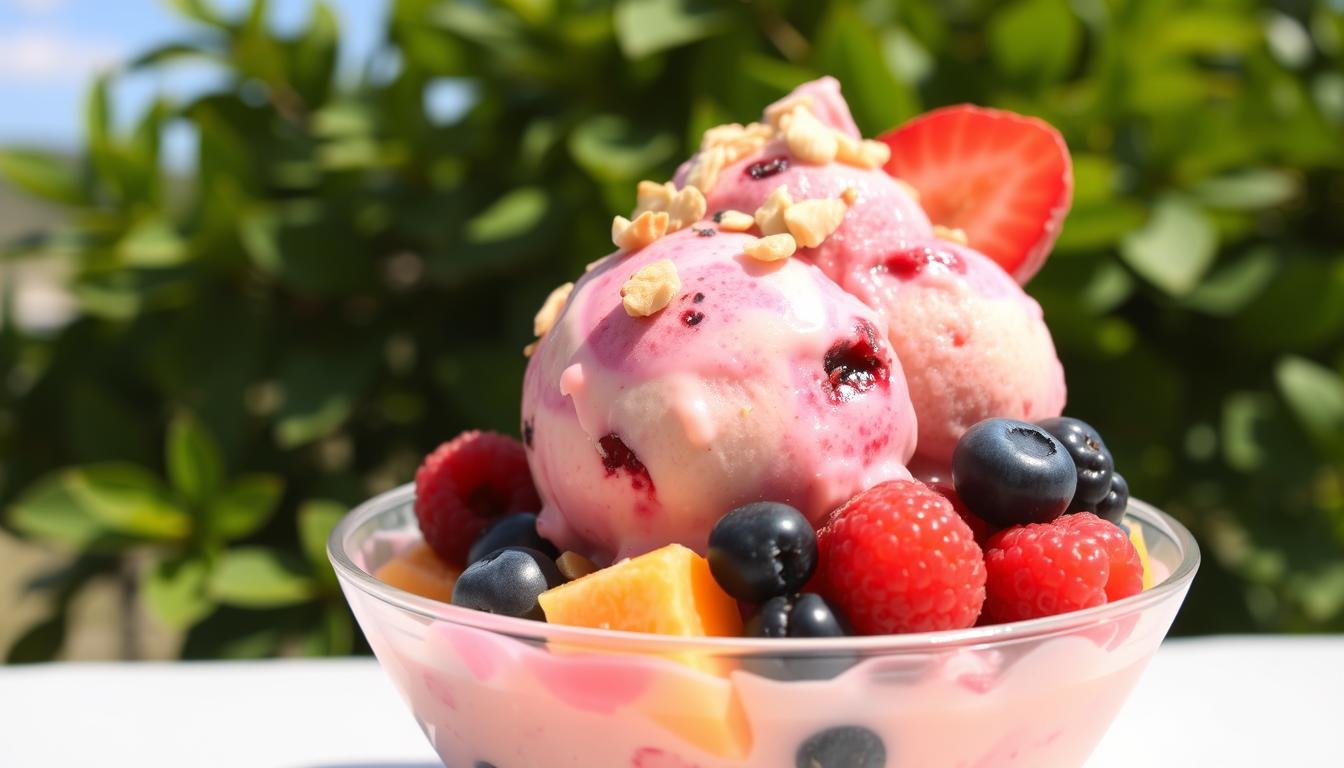Rice cakes are popular as a light snack, often seen as part of clean eating. They are low in calories, making them appealing to those watching their carb intake or following gluten-free diets. Yet, their nutritional value is a topic of debate.
While they have few calories, rice crackers lack essential nutrients. They also have a high glycemic index, which can cause spikes in blood sugar. To improve their healthiness, adding nutrient-rich toppings like nut butter, avocado, or hummus is key.
In summary, rice crackers can fit into a healthy diet when balanced with other foods. They shouldn’t be seen as a magic food, though.
Understanding Rice Crackers
Rice crackers are a popular snack seen as healthier than chips or traditional crackers. They are thin, crunchy wafers made from puffed rice, often seasoned. It’s key to know their nutritional facts to see if they’re truly healthy.
What are Rice Crackers?
Rice crackers are thin, round wafers made from rice flour or puffed rice. They have a light, crunchy texture. You can find them in many flavors, from plain to seasoned with spices or herbs. They’re often called gluten-free and low-calorie.
Nutritional Profile
The nutritional value of rice crackers is more complex. They have few calories, about 30-35 per cracker. But, they’re mostly made from refined white rice, lacking vitamins, minerals, or fiber. This can cause quick spikes and drops in blood sugar.
“Rice crackers are not a low-carb option due to their high carbohydrate content from rice flour. A typical serving can contain 20-30 grams of carbs, a substantial portion of daily carb intake.”
Also, rice crackers are low in protein, fiber, vitamins, and minerals. Even though they’re gluten-free, they don’t offer much health benefit compared to other snacks.

Pros and Cons of Rice Crackers
Rice crackers are a popular snack, seen as healthier than regular crackers. But, like any food, they have both good and bad sides. Let’s look at the key points about their healthiness, calorie count, and overall pros and cons.
Rice crackers are low in calories, making them good for weight management. They are also gluten-free, which is great for those with dietary restrictions. Plus, they’re easy to carry and satisfy a crunchy snack craving.
“Rice crackers can be a healthier alternative to traditional crackers, but it’s important to be mindful of the portion size and nutritional content.”
But, rice crackers have some downsides. They are mostly made from refined white rice, which lacks nutrients. Their high glycemic index can cause blood sugar spikes and crashes. This might lead to hunger and cravings.
Also, rice crackers have little fiber and protein. This means they don’t keep you full for long. You might end up eating more than you should.
Looking at rice cracker calories, a plain one has about 35 calories. But, flavored ones can have more calories, added sugars, and sodium. Always check the nutrition labels to choose the right rice crackers for your diet.
In summary, rice crackers can be a good snack choice if you’re careful. Pay attention to portion sizes and nutritional content. Eating a variety of whole, nutrient-rich foods is best for staying healthy.

are rice crackers healthy
Rice crackers might not be the healthiest snack alone. But, you can make them better. Pair them with nutrient-dense toppings to boost their nutritional value. Spread almond or peanut butter on them for healthy fats and protein to keep you full.
Adding avocado to rice crackers increases fiber and healthy fats. Try hummus and fresh vegetables like cucumbers, tomatoes, or bell peppers. These toppings turn a simple rice cracker into a balanced and satisfying snack. With the right topping choices, rice crackers can be part of a healthy diet.

Healthier Homemade Rice Crackers
To make rice crackers healthier, bake your own using whole grain brown rice. This change adds more fiber, vitamins, and minerals. You can also add seeds, nuts, or herbs for extra nutrition.
Rice cracker toppings
Rice crackers are great for making tasty snacks. They’re crunchy and light, perfect for snacking. Adding toppings like avocado or hummus can make them even better.
A simple mix of olive oil and herbs can make a snack delicious. This is great for snacking or when you have guests over.
Are rice crackers healthy? It depends on what you put on them. Adding fresh veggies or lean proteins makes them healthier. Some brands offer whole grain options for more fiber.
For a sweet treat, try Greek yogurt with herbs or fruit. Or, go for an Asian flavor with sesame seeds and soy sauce. Trying new toppings keeps snacking fun and lets you meet different tastes.
Rice crackers can be a fun snack with the right toppings. They’re healthy and easy to customize. So, whether it’s a quick snack or a party, the right toppings make all the difference.
Low-sodium rice crackers
In recent years, low-sodium rice crackers have gained popularity as a health-conscious snack option. Made primarily from rice, these crackers offer a light and crispy texture that satisfies the crunch cravings many snackers have. The reduction of sodium in these products caters to a growing audience that is increasingly aware of their sodium intake, whether for health reasons or personal preference. By choosing low-sodium varieties, consumers can enjoy the delightful crunch of rice crackers while also being mindful of their nutritional choices.
When examining the rice cracker ingredients, it becomes clear that many brands have prioritized simplicity and healthfulness. Typically, the main ingredient is rice flour, which may be complemented by seasonings and flavorings that enhance the overall taste without overwhelming the natural flavor of the rice. Many brands also incorporate whole grains or additional seeds to elevate their nutritional profiles. Additionally, lower sodium levels are often achieved through careful seasoning, allowing for a satisfying snack that doesn’t compromise on flavor.
But the question remains: are rice crackers healthy? The answer largely depends on the specific product and individual dietary needs. Low-sodium rice crackers can be a healthier alternative to traditional crackers, especially for those watching their salt intake. They are generally low in calories and fat, making them a popular choice for dieters. However, consumers should be vigilant and read nutrition labels carefully, as some varieties may include additives or high amounts of carbohydrates.
Ultimately, incorporating low-sodium rice crackers into a balanced diet can provide a satisfying snack that aligns with health goals. Whether enjoyed on their own, paired with dips, or used as a base for toppings, they offer versatility in snacking. As with any food choice, moderation and mindfulness are key, allowing snack lovers to relish their treats without straying from their health objectives. With the right selection, low-sodium rice crackers can indeed be a delightful addition to one’s snack repertoire.
Japanese rice crackers
Low-sodium rice crackers are a popular choice for health-conscious eaters. They’re light and crispy, perfect for satisfying cravings. They’re also good for those watching their sodium intake.
Many brands focus on simple, healthy ingredients. Rice flour is the main ingredient, with added seasonings for flavor. Some also include whole grains for extra nutrition. Lower sodium levels come from careful seasoning, keeping the snack tasty.
Are rice crackers healthy? It depends on the product and your diet. Low-sodium options are better than regular crackers for salt watchers. They’re low in calories and fat, great for dieters. But, always check the label for additives or carbs.
Adding low-sodium rice crackers to your diet can be a good choice. They’re versatile for snacking, whether alone or with dips. Just remember to snack in moderation and choose wisely.
Conclusion
Rice crackers can be a good, low-calorie snack. But, they don’t have much nutritional value. They are often seen as healthy because they have few calories and are gluten-free. Yet, they are mostly made from white rice, which is low in fiber and protein.
Their high glycemic index can cause blood sugar to rise and fall. This makes them not the best choice for lasting energy.
To make rice crackers healthier, pair them with foods that are full of nutrients. Nut butters, avocado, or hummus are great options. They make rice crackers more filling and nutritious, giving you steady energy.
People with gluten intolerance or celiac disease might find rice crackers a good substitute for other snacks.
In summary, rice crackers are okay as a snack but have their limits. Adding nutritious toppings and pairings can make them better. This way, you can enjoy a snack that’s both tasty and supports a healthy lifestyle.




Pingback: Diet Pepsi Ingredients: What's Inside Your Favorite Soda